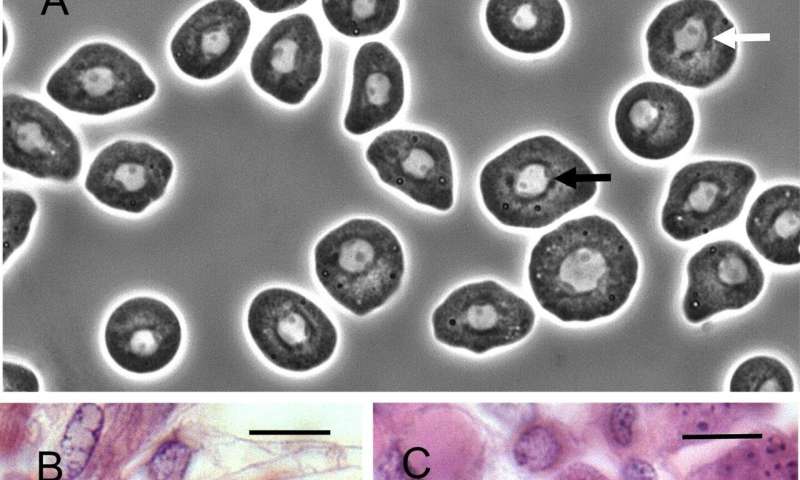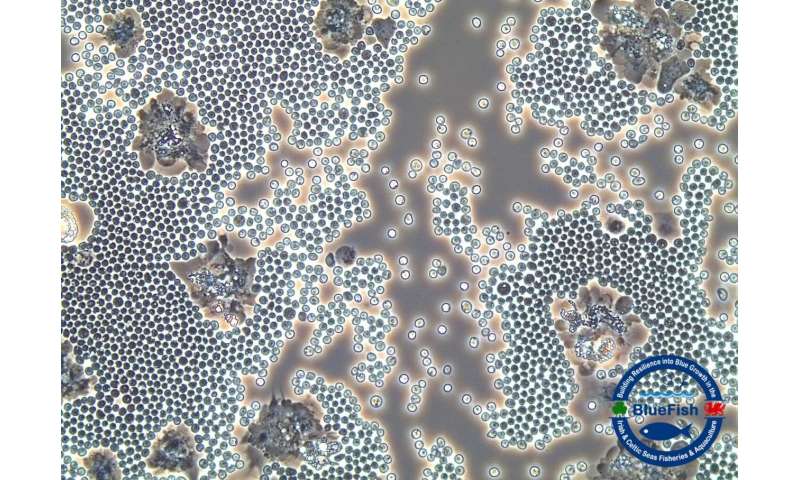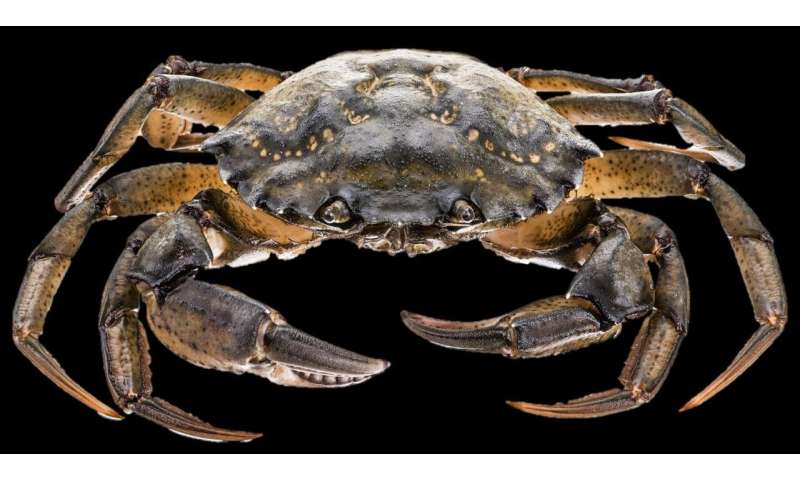#Two new species of parasite discovered in crabs: Discovery will help prevent infection of other marine species
“#Two new species of parasite discovered in crabs: Discovery will help prevent infection of other marine species”

Swansea University researchers have discovered two new species of parasite, previously unknown to science, in crabs in Swansea Bay, during a study on disease in the Celtic and Irish Seas.
Both species are emerging pathogens, and were discovered infecting the common shore crab, so they could potentially have damaging effects on fisheries and other marine species. The researchers’ discovery will help inform measures to reduce this risk.
The common European shore crab is native to the UK, Ireland and the north east Atlantic. It shares this habitat with many commercially important species such as the edible crab and several lobster species.
The shore crab is also an invasive species in other countries as it can survive in a wide range of different environments, potentially carrying diseases with it.
The discovery was made by researchers from the BlueFish project in the University’s Biosciences department. They were carrying out a year-long, multi-disease monitoring survey over two locations in Swansea Bay: Mumbles Pier and Prince of Wales dock.
When they were examining the crabs, they noticed parasites in the blood which they had never seen before.
They used a range of methods, from analyzing diseased tissue from the crabs, to examining the parasite DNA using a technique called Sanger sequencing. The sequences seemed to indicate a new species.

Collaborators at the Natural History Museum, London and CEFAS in Weymouth were able to generate a longer sequence of the parasite DNA, verifying the presence of two new parasite species.
The team have named the new species Haplosporidium carcini, after the host species, (Carcinus maenas) and Haplosporidium cranc, with ‘Cranc’ being Welsh for crab, a reference to both their Ireland-Wales funding, and the location of discovery, or ‘Welsh’ nature of the parasite.
The researchers also observed that:
- Infections were found in only one of the two locations—Mumbles Pier, Swansea Bay
- Infection levels were very low, around 1-2%
Dr. Charlotte Eve Davies from Swansea University College of Science, Scientific Officer on the Bluefish project, said:
“It is so important to understand the role of the shore crab in hosting parasites and disease, and if they are passing these on to other commercially important crustaceans.

The systematic approach we used, employing different detection methods, is vital in getting the best possible picture of these new pathogens.
Our study and broader work also suggest that the overall habitat—physical surroundings and ecosystem -may be influencing the presence and prevalence of pathogens, depending on the location.
It’s been really exciting to be able to characterize two new species and a real team effort. Professor Andrew Rowley first noticed these new parasites and named them parasites x, y and z for months before we realized that we really did have a new species!”
The research was published in the journal Parasitology.
More information:
Charlotte E. Davies et al, Diagnosis and prevalence of two new species of haplosporidians infecting shore crabs Carcinus maenas: Haplosporidium carcini n. sp., and H. cranc n. sp., Parasitology (2020). DOI: 10.1017/S0031182020000980
Two new species of parasite discovered in crabs: Discovery will help prevent infection of other marine species (2020, July 15)
retrieved 15 July 2020
from https://phys.org/news/2020-07-species-parasite-crabs-discovery-infection.html
This document is subject to copyright. Apart from any fair dealing for the purpose of private study or research, no
part may be reproduced without the written permission. The content is provided for information purposes only.
If you want to read more Like this articles, you can visit our Science category.
if you want to watch Movies or Tv Shows go to Dizi.BuradaBiliyorum.Com for forums sites go to Forum.BuradaBiliyorum.Com
